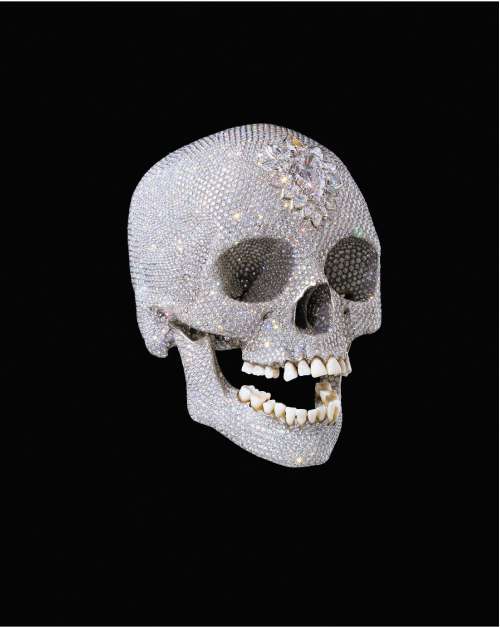Hirst's £50m skull? It's no more than a 'decorative object'

When Damien Hirst unveiled a diamond-encrusted human skull worth £50m, his fans hailed it as a haunting work of genius which fully deserved to become the most expensive piece of contemporary art ever made.
Nearly a year later, For the Love of God is still creating a stir – but possibly not for the reasons Hirst had hoped.
Yesterday, Ralph Rugoff, director of the Hayward Gallery in London, issued a devastating critique of the work's artistic merit, discounting it as a "decorative object" which, despite the attention it received, marked a less than glittering moment in its creator's career. "It's not challenging or fresh. It's a decorative object which is not particularly well done. What is so interesting about it? Damien Hirst is an important artist, but this was not his finest moment," he said.
Speaking at the launch of his gallery's 40th-anniversary programme this year, which includes another skull created by the Turner Prize-winning artist Grayson Perry, Mr Rugoff said other people were attempting similar projects with greater artistic integrity. "There are many critical takes on Hirst's skull. Grayson Perry has his own skull, which is much less about glitter and glamour," he added.
Mr Rugoff went on to speculate whether the sale of Hirst's skull, which was alleged to have been bought by a consortium which included the artist and White Cube, the gallery which represents him, might have been made to "save face" for the artist after placing such an ambitious price tag on the artwork.
Other senior members of the arts world referred to the huge publicity that surrounded the unveiling of For the Love of God. Caroline Douglas, the head of the Southbank Centre's Arts Council Collection, said the show would refer to the impact of "celebrity culture" on the art world. Perry has curated for a touring exhibition of the collection, Unpopular Cultures, which begins in May.
"When Henry Moore made a bronze, it was not picked up by the Evening Standard, or when Barbara Hepworth created something new, it was not splashed across the papers. Now, there is a group of artists who are household names. Grayson Perry is looking at the world before that and has made his two new pieces in response to that. The new work was made in the year Damien Hirst was getting blanket coverage for his skull," Ms Douglas said. Meanwhile, Mr Rugoff added his voice to the criticism of "blockbuster" exhibitions first expressed by the National Gallery's director, Nicholas Penny, two weeks ago. Mr Rugoff said: "Exhibitions cost more and more to put on and there are more risks involved. It's easy to say, 'let's play it safe. Let's go on what the public knows and already loves.'"
This year, the Hayward's programme will include a retrospective of the work of Ed Ruscha, who Mr Rugoff called "a major American artist and the west coast's answer to Andy Warhol", who has never before received as much attention in Britain "because we do not have name recognition".
Another display, in October, will bring the television and film work of Warhol to public attention. "The Warhol show will not be a blockbuster. It's not going to be about his Marilyn silk-screens and his Campbell soup pictures.
"This is a show with a point. A key element to his work was film and television and he produced a series of television programmes in the 1970s. Many retrospectives do not present these works He was the most multi-faceted artist of the 20th century," said Mr Rugoff.
Join our commenting forum
Join thought-provoking conversations, follow other Independent readers and see their replies
Comments
Bookmark popover
Removed from bookmarks